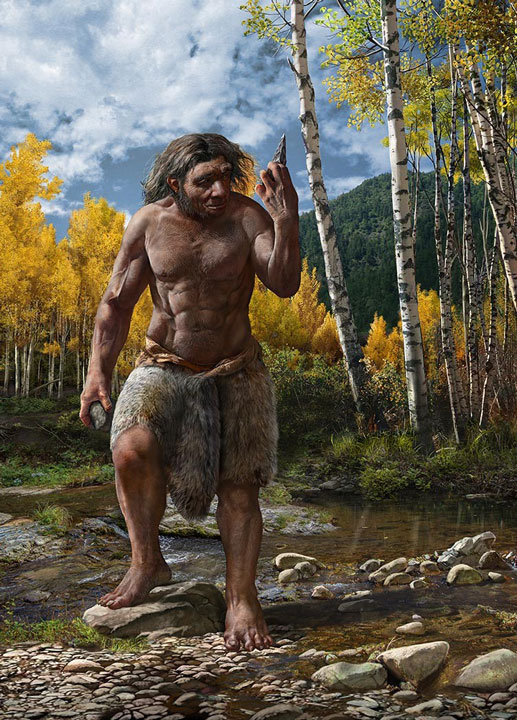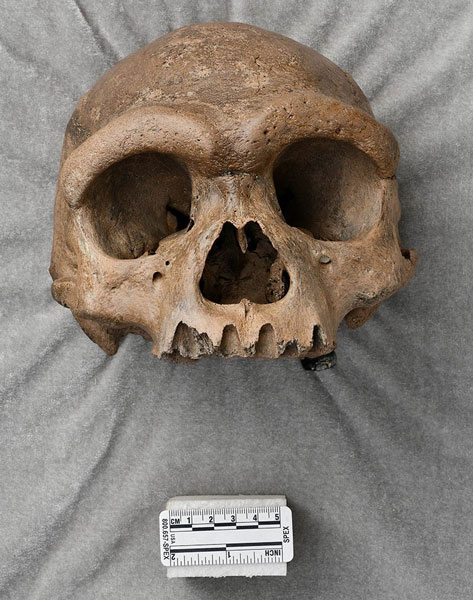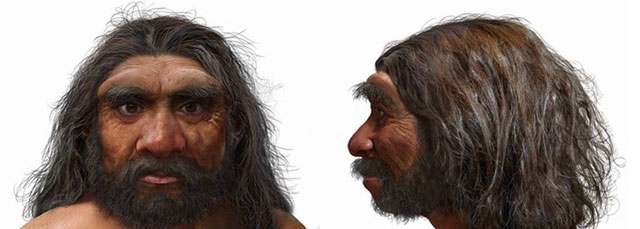No sooner have we praised the remarkable artist Zhao Chuang for his work illustrating the mammaliamorph biota associated with Early Cretaceous China, then he produces another stunning piece of palaeoart – this time illustrating the newly described “Dragon Man” or to give the proposed formal scientific name Homo longi.

A Completely New Species of Human
Researchers including Professor Chris Stringer from the London Natural History Museum have published a paper in the journal “Innovation” that describes and dates a remarkable and very complete fossil skull from Heilongjiang Province. The team have concluded that the ancient skull believed to be at least 146,000 years old represents a completely new species of human. They postulate that the skull could be from our closest evolutionary relative among known species of hominin such as Homo erectus and Homo neanderthalensis.

“Dragon Man”
The skull was reportedly discovered in 1933 by a construction worker helping to build a bridge over the Songhua river running through the city of Harbin. The river means “Black Dragon River” in the local language which explains why this skull representing a male was nicknamed “Dragon Man”.
The province was occupied by imperial Japanese forces at the time, so the construction worker hid the skull at the bottom of his family’s well to prevent it falling into the hands of the Japanese. According to media reports he only told relatives about the fossil find shortly before his death. The specimen was handed over to scientists so that a full examination of this extraordinary fossil could be carried out.
Where the fossil was found remains a mystery, but geochemical analysis suggests it came from lakebed sediments (lacustrine sediments). The research which involved non-destructive X-ray fluorescence, the analysis of rare earth elements and strontium isotope degradation, placed the date of this fossil between 138 to 309 thousand years old.
Uranium isotope analysis indicated that the fossil was at least 146,000 years old.

Commenting on the significance of this discovery, Professor Chris Stringer stated:
“The skull has a large brain capacity, fully within the range of modern humans and Neanderthals. It also shows features resembling our species, including flat and low cheekbones with a shallow canine fossa, and the face looks reduced and tucked under the braincase. It’s widely believed that the Neanderthals form the sister group of the Homo sapiens lineage. But our analyses suggest that this skull, and some other Middle Pleistocene human fossils from China, form a third East Asian lineage, which is actually closer to sapiens than the Neanderthals are”.
Is “Dragon Man” a Denisovan?
Other researchers have suggested that the skull might represent an example of the ancient human known as a Denisovan. Where “Dragon Man” fits on the human family tree remains uncertain, but it is true that the evolution of hominins during the Pleistocene Epoch has yet to be fully explained. There may have been a number of human lineages inhabiting our planet and the exact taxonomic relationships between them will continue to attract controversy and lively debate.
The scientific paper: “Geochemical provenancing and direct dating of the Harbin archaic human cranium” by Qinqfeng Shao, Junyi Ge, Qiang Ji, Rainer Grün and Chris Stringer published in the journal Innovation.
For the article featuring the mammaliamorph illustration by Zhao Chuang: The Jehol Biota and a Wonderful Illustration.
The artist Zhao Chuang is associated with the remarkable PNSO range of prehistoric animal figures.
To view the PNSO prehistoric animal model range: PNSO Scientific Art Figures.






Please try to stock the Bullyland Spinophorosaurus. 🙂